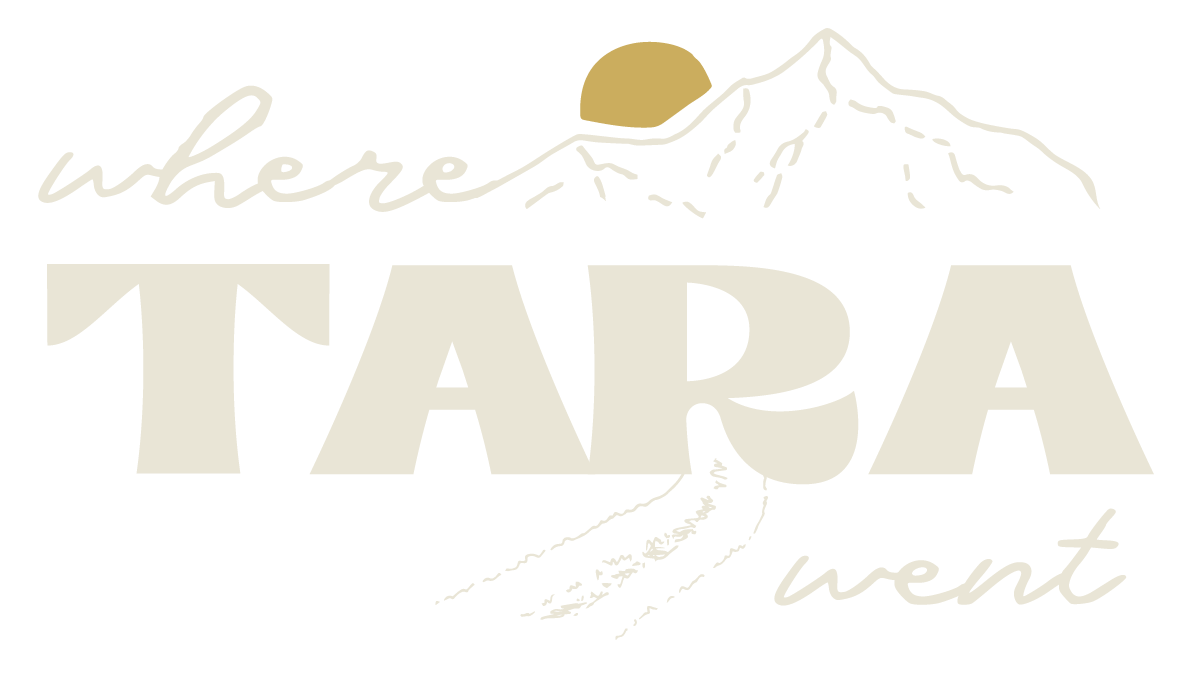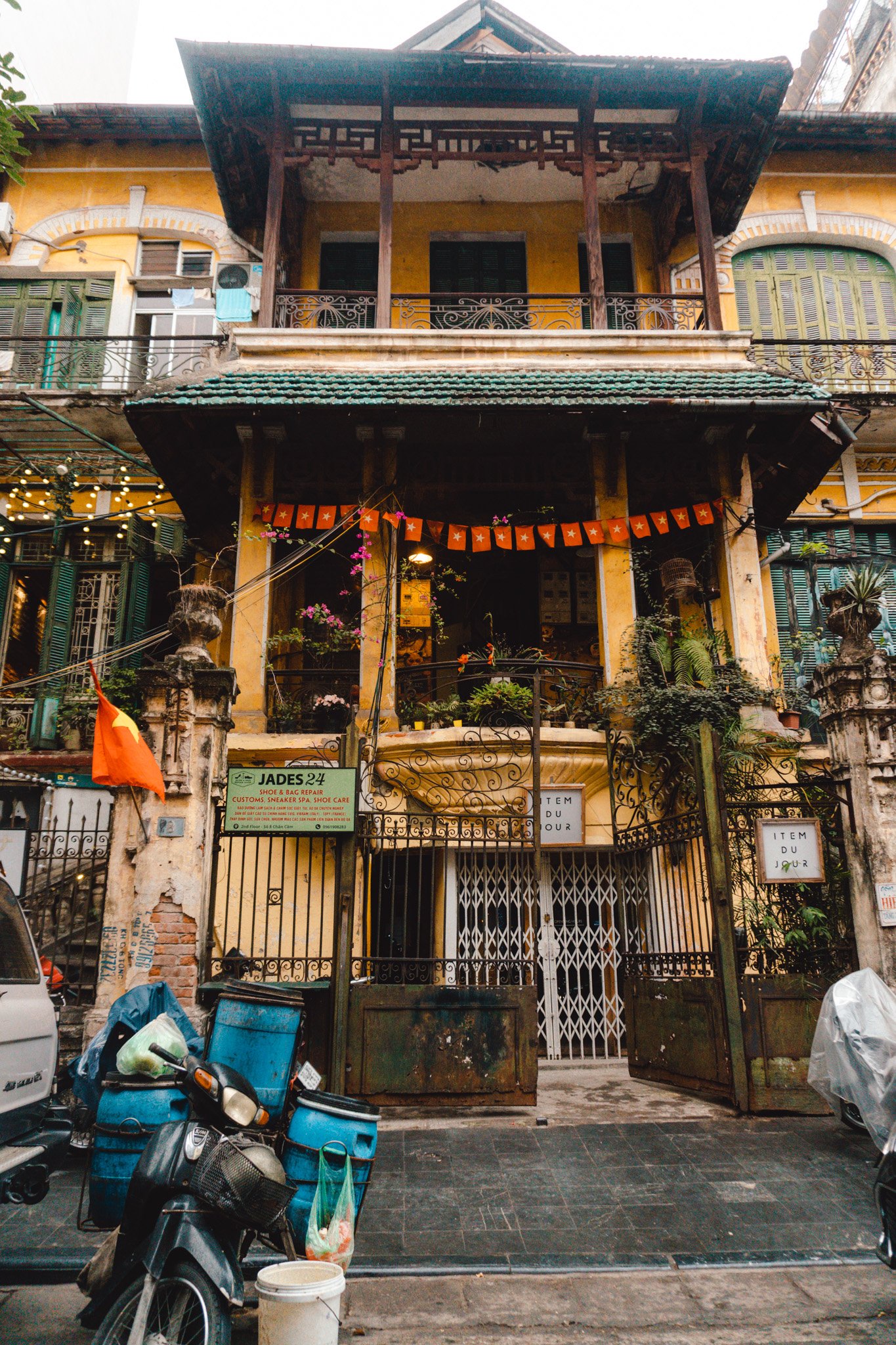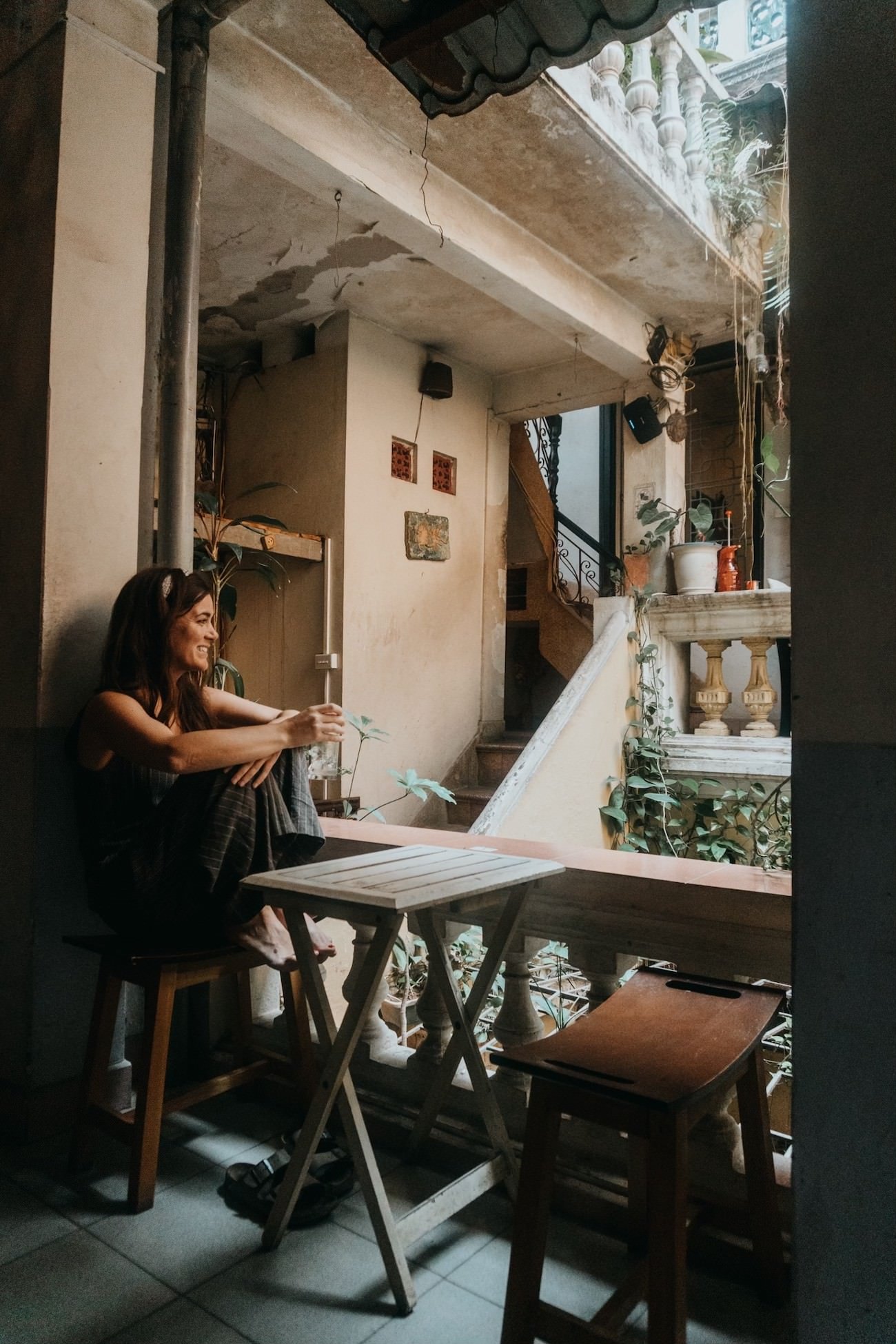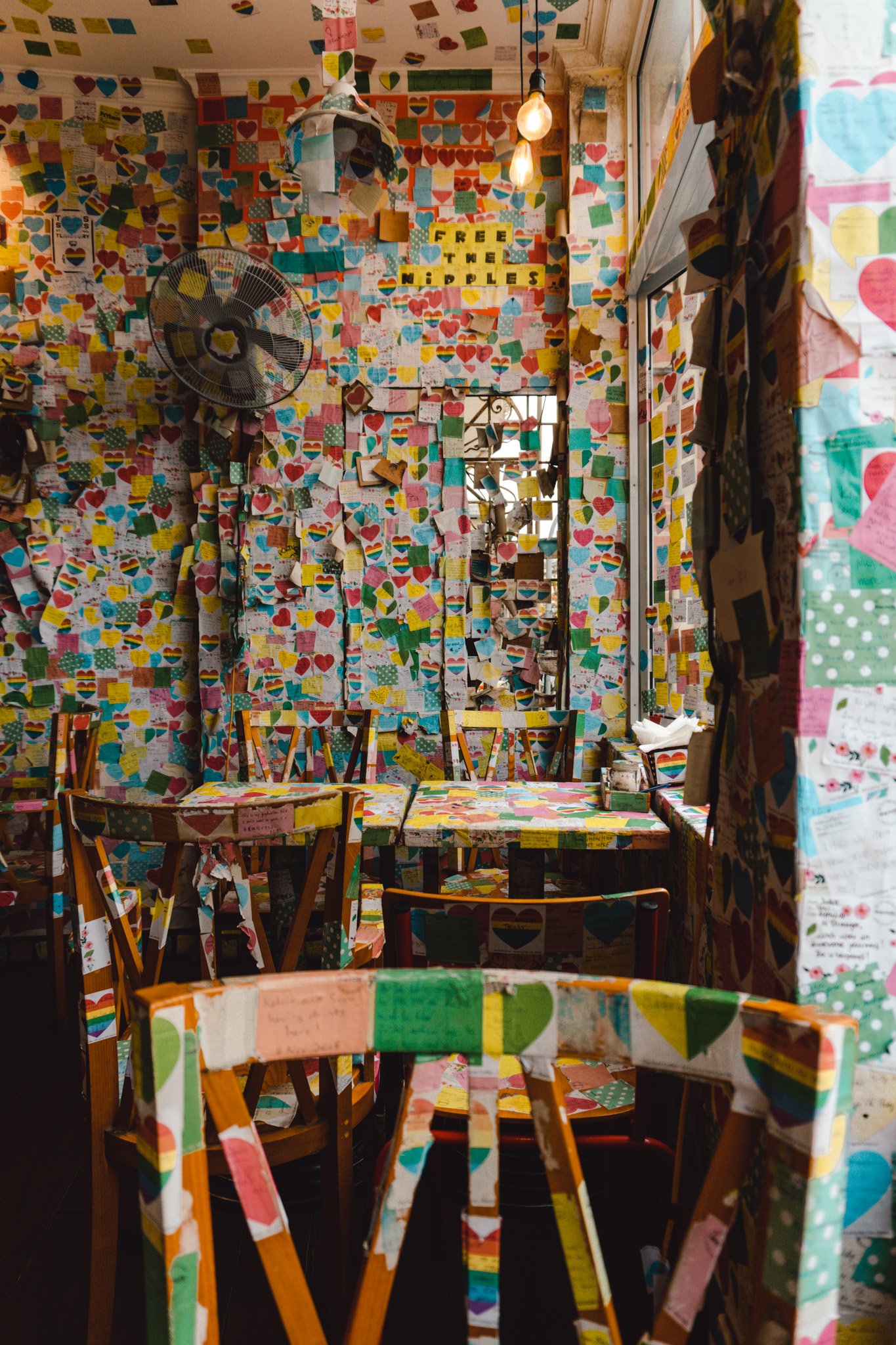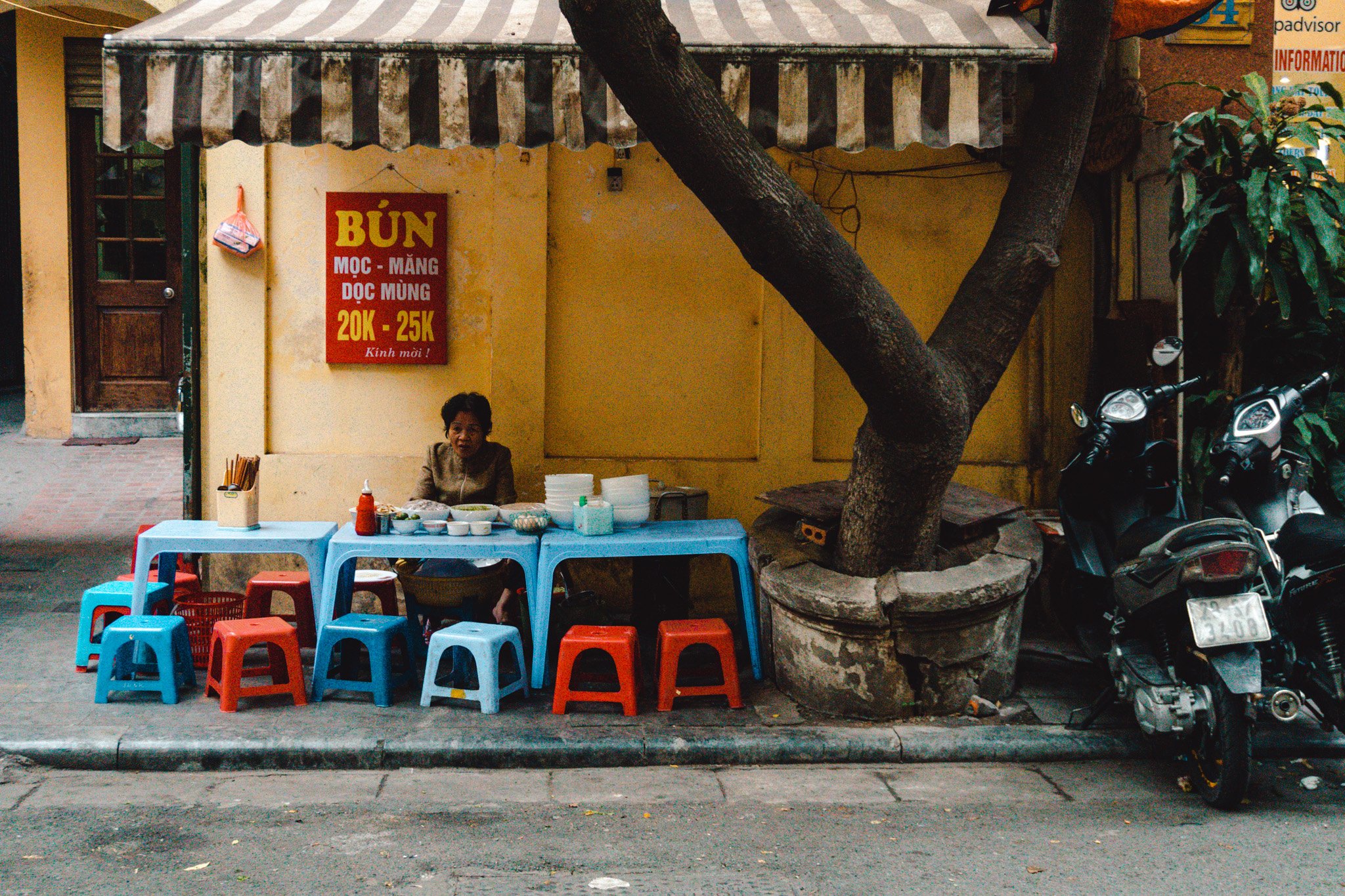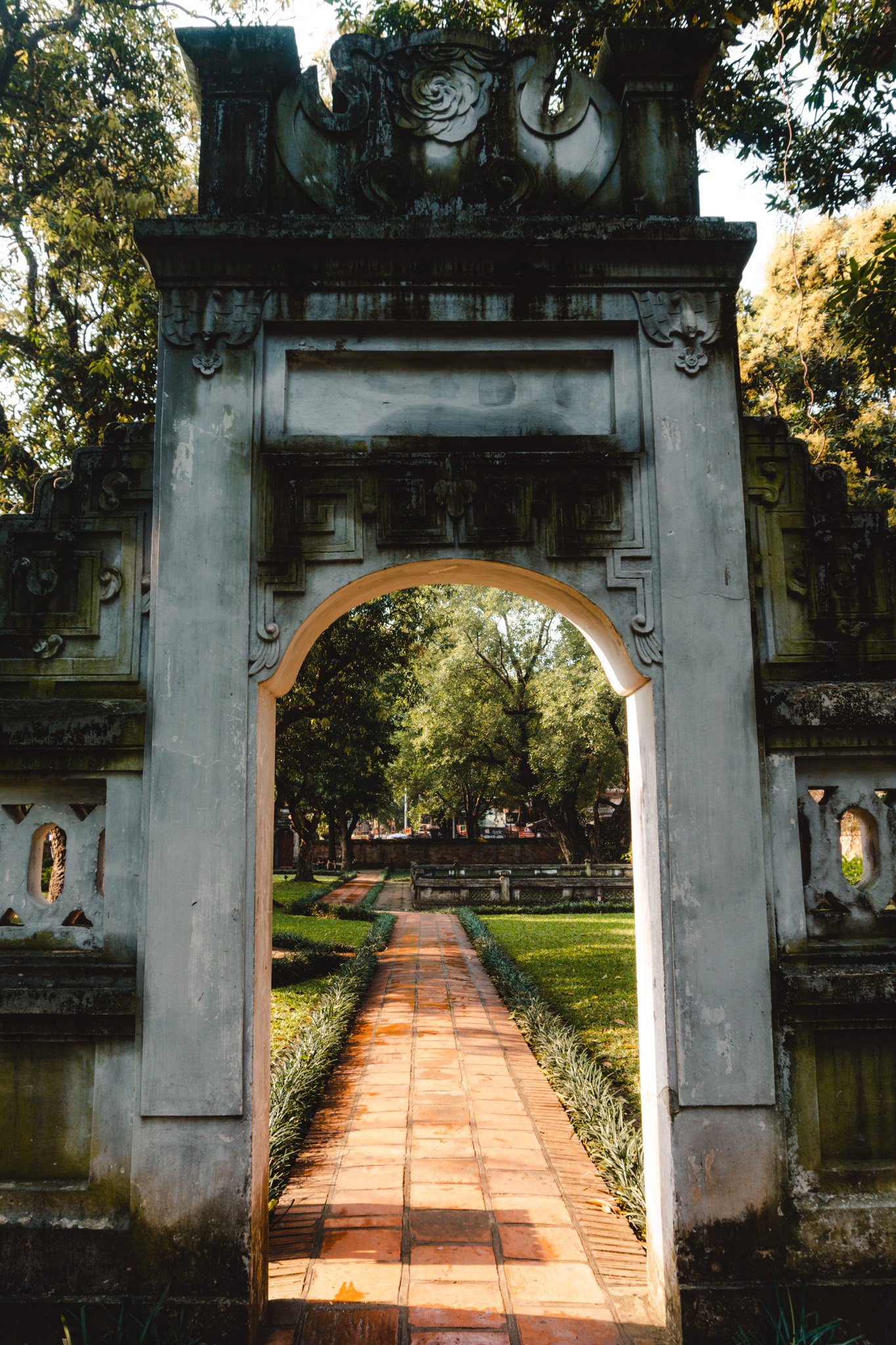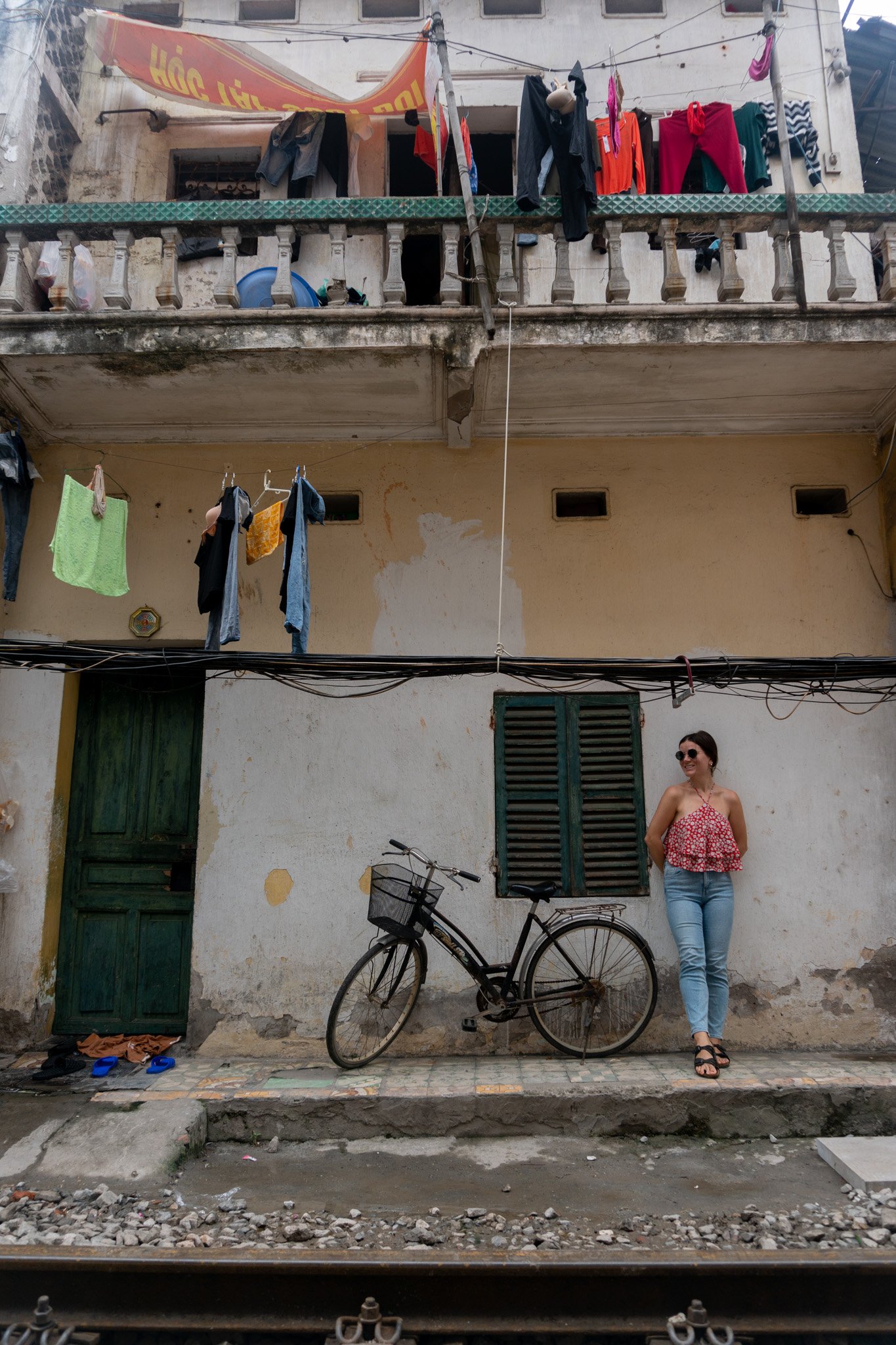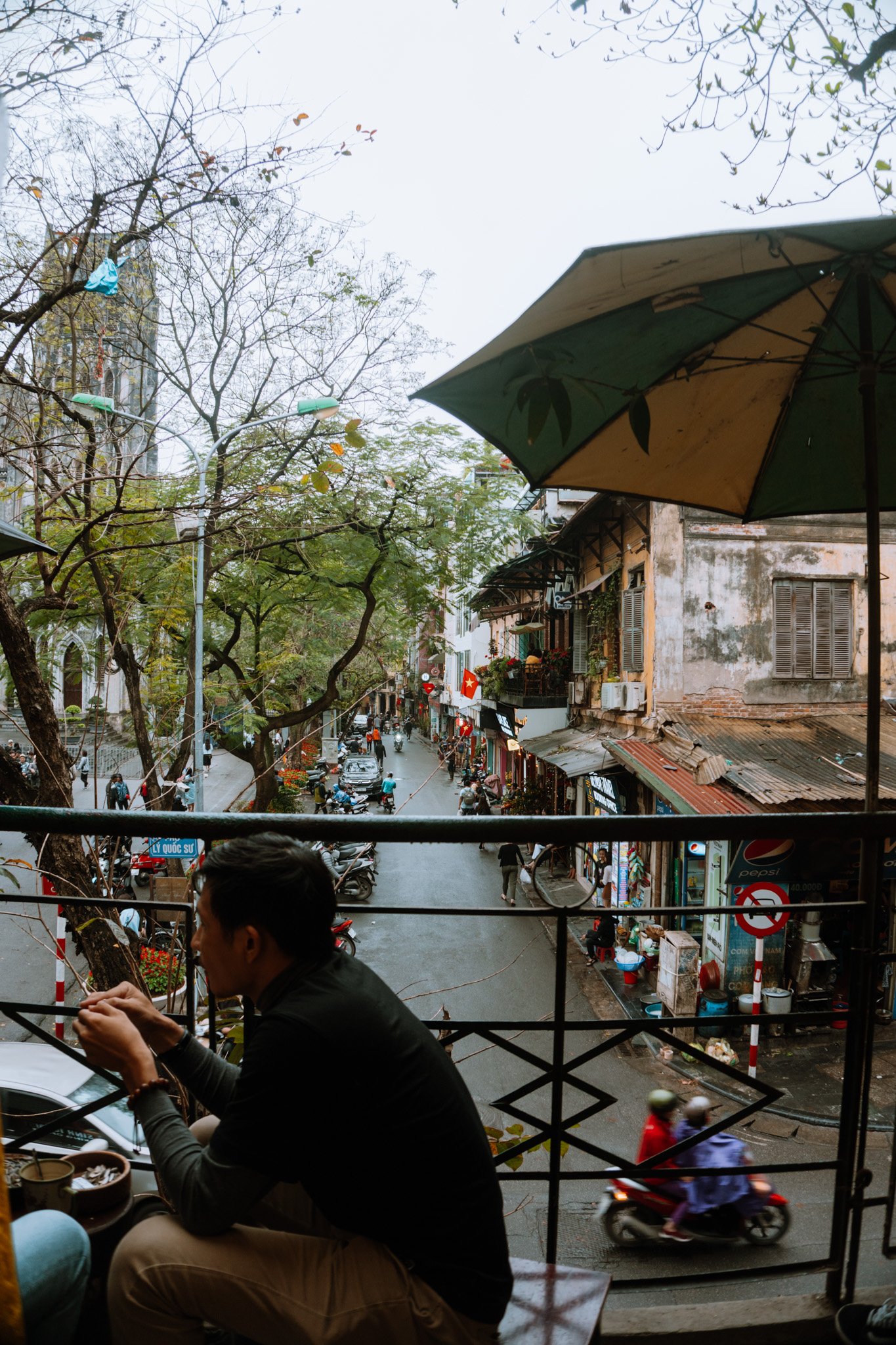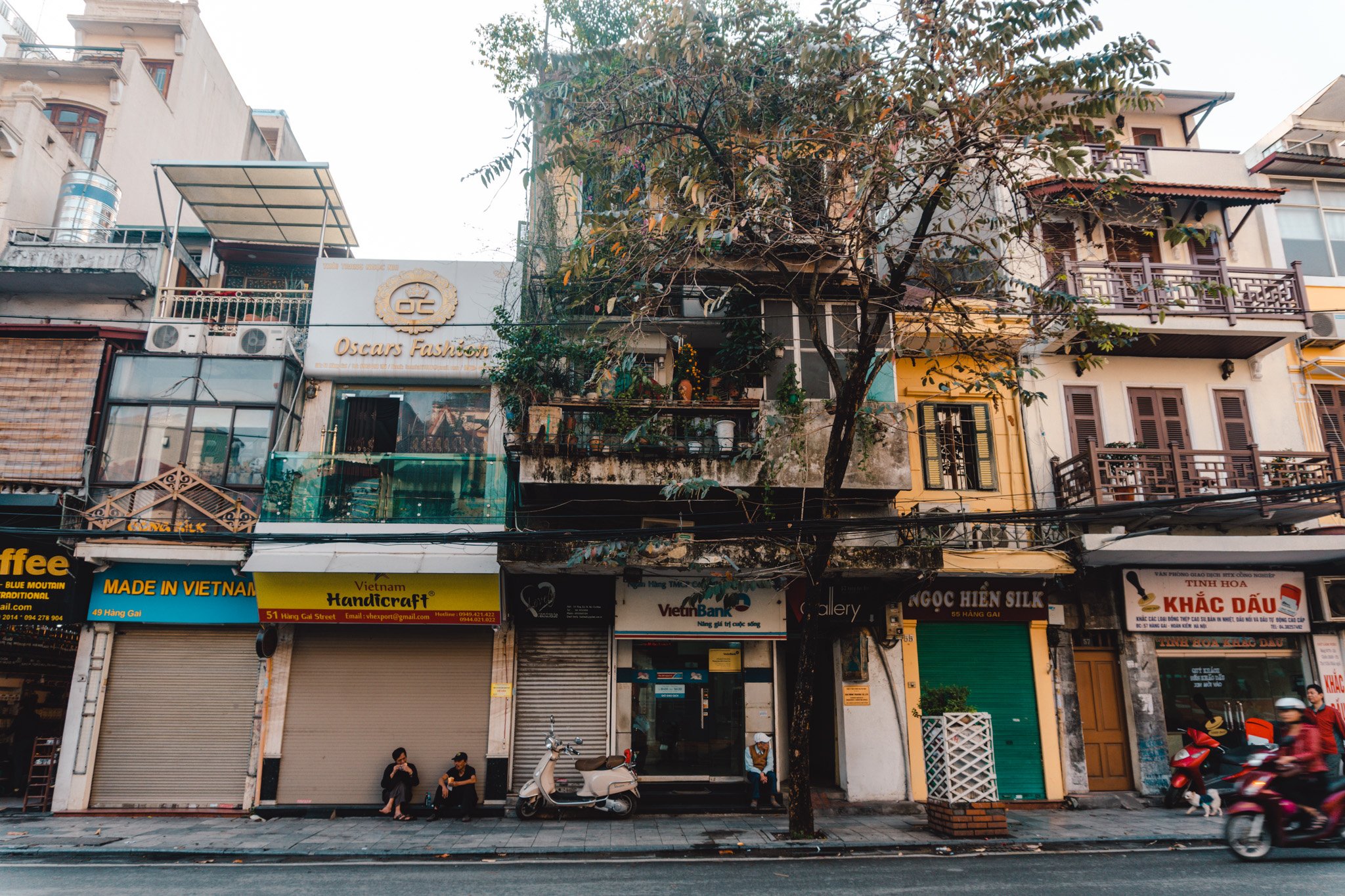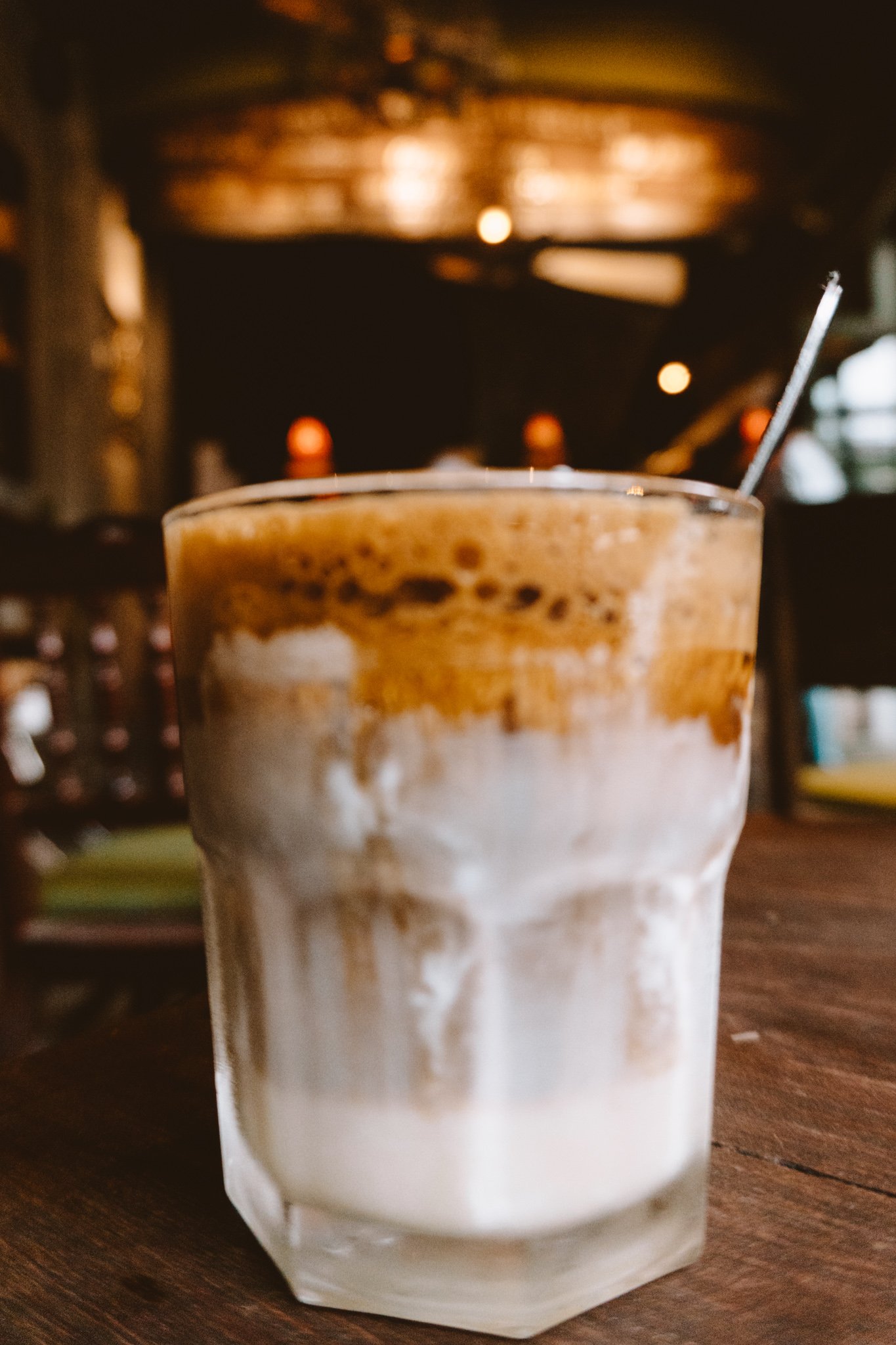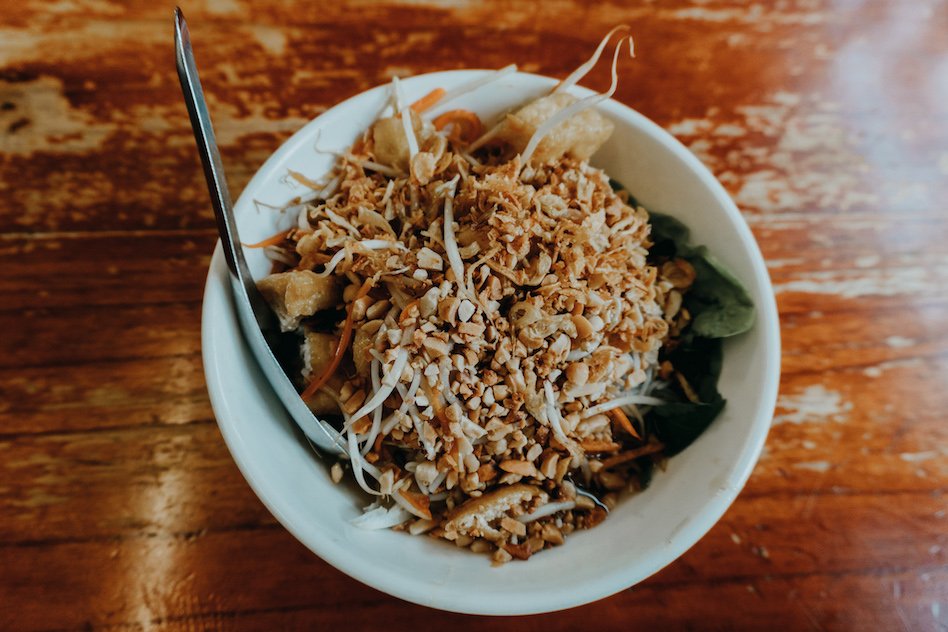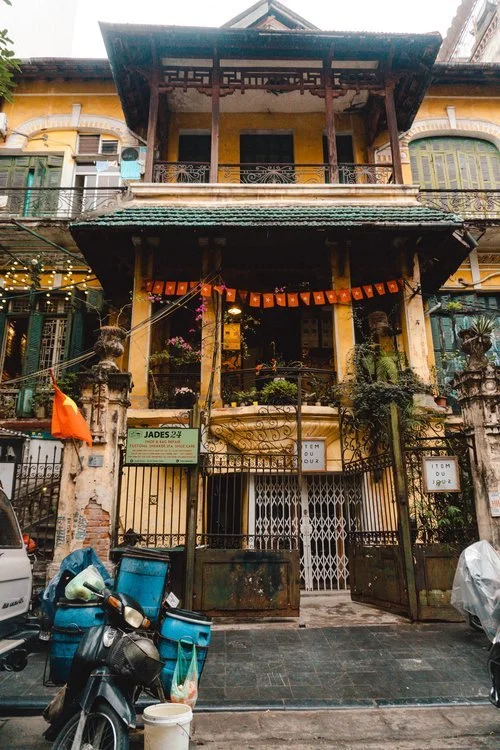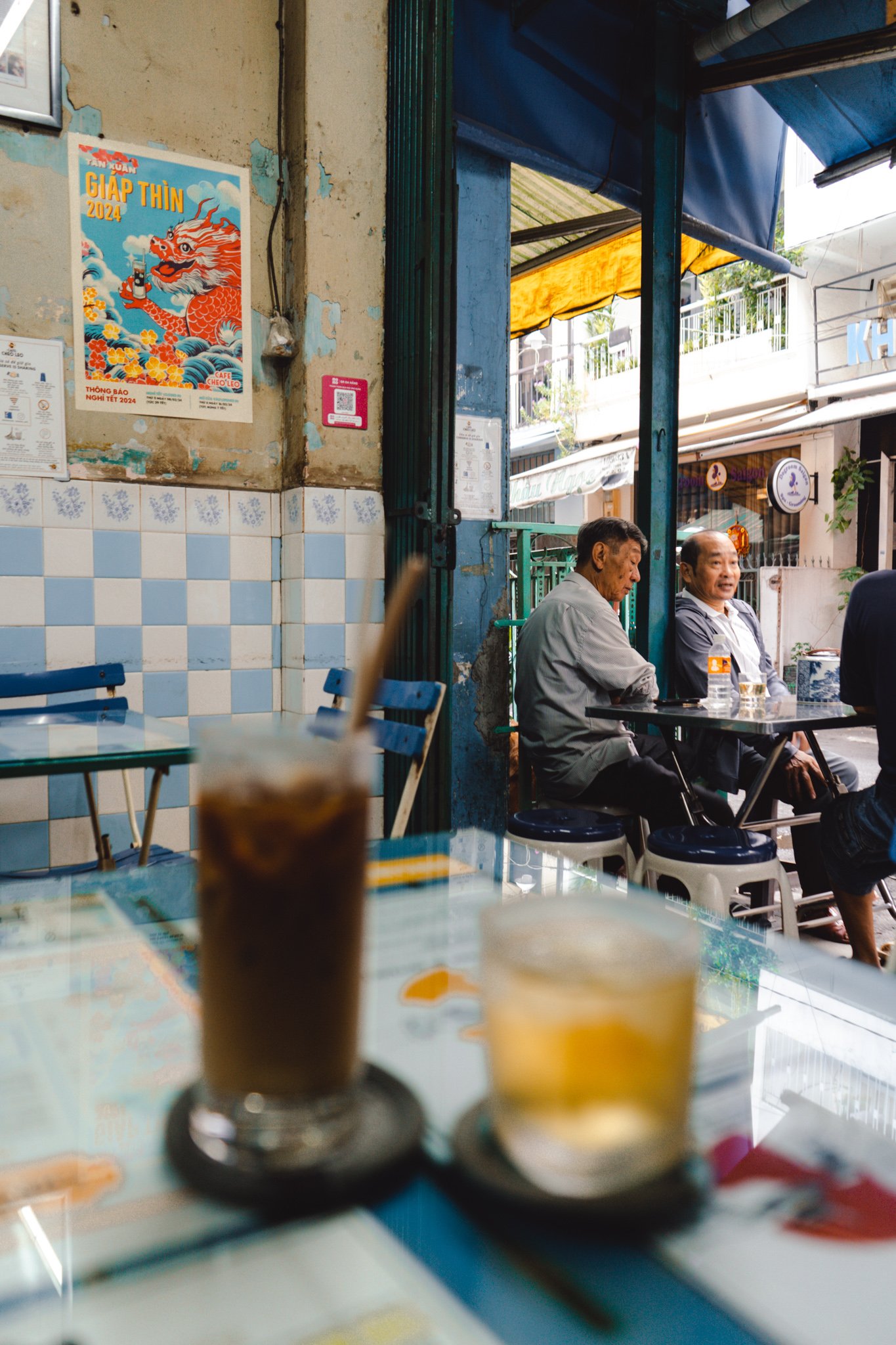3 Days in Hanoi (2025): The Perfect 3-Day Hanoi Itinerary for First-Time Visitors
This comprehensive 3-day itinerary includes all the details you need to plan the ultimate trip to Hanoi. It includes information about where to stay, where to eat, and what to do in Hanoi.
It’s no secret, I love Hanoi! Spending three days in Hanoi is a must for travelers in Vietnam. It’s a city teeming with museums to visit, food to devour, and historical sites to visit. If you're planning a short but action-packed trip, this comprehensive 3-day itinerary and complete travel guide to Hanoi will help you make the most of your time. From exploring historical landmarks to savoring delicious street food, from fully immersing yourself in rich cultural heritage to indulging in the city’s cocktail scene, Hanoi offers an incredible blend of old-world charm and modern excitement.
I was captivated by Hanoi the first time I visited, and every time I returned, I was filled with the same sense of awe. Even after spending over a month in the city, I found a sense of excitement in Hanoi’s bustling streets and stumbling upon hidden gems. With this expertly curated itinerary for three days in Hanoi, you’ll be introduced to the city’s cultural wonders, its iconic city landmarks, and delve into its must-eat Vietnamese street food.
This 3-day itinerary has something for everyone, especially first-time visitors. I’ve crafted it to ensure you make the most of your time in this enchanting city. It will guarantee you make the most of your three days exploring Hanoi.
when to visit Hanoi ↴
While Hanoi’s year is technically split into two seasons (rainy and dry), the city still experiences all four typical transitions: spring, summer, fall, and winter. The best time to visit Hanoi is between September and November, and again from March to April. During these months, the weather is relatively mild and pleasant.
Spring (February-April) | Spring is one of my favorite times to visit Hanoi. The temperatures are mild, usually hovering between 16-28°C (61-82°F) without too much rain. The blossoms are beautiful and the weather makes walking around the city more pleasant than in the high summer temperatures.
Summer (May-August) | During the summer, the city experiences high temperatures and heavy rainfall, which may affect your travel plans. Despite the hot and rainy weather, this period can be a good time for budget travelers to visit if they want discounts on accommodation and are flexible with their plans. Still, expect torrential downpours off and on and temperatures hitting upwards of 25-35°C (77-95°F).
Autumn (September-November) | Autumn is one of the most picturesque seasons in Hanoi. Cooler temperatures make exploring the city much more enjoyable. Temperatures across the three months slide between 18-30°C (64-86°F). Visiting in November means timing your visit with fall foliage, and there are fewer crowds to contend with.
Winter (December-January)| Between December and February, temperatures can drop to as low as 10°C (50°F). While it’s a bit cold during this time of year, the benefit is that there are fewer crowds to contend with.
Public holidays in Hanoi ↴
There are a lot of Vietnamese national holidays throughout the year, many of which can impact travelers’ plans with large crowd sizes, business closures, and price hikes. Perhaps the biggest and most culturally significant Vietnamese holiday is Tết, the first day of the Lunar New Year.
Tết celebrations usually last an entire week. Many (honestly, most) businesses close while people leave the city to spend the week with their families. This can significantly impact your plans! Tết also causes massive traffic across the country; something to consider if you’re traveling from one destination to another. Drive times can more than double.
how many days to spend in Hanoi ↴
Hanoi has plenty to keep you busy for any length of time. It’s a place I spent three weeks in one go and contemplated spending a fourth. Every time I’ve returned to Hanoi I find more food, coffee, and art to be consumed. Many people hate Hanoi, but others (like me) find themselves eternally comfortable and curious here. The truth is, once you fall in love with Hanoi, you’ll never want to leave.
However, I recommend first-time visitors spend at least three days exploring the French colonial buildings, drinking delicious egg coffees, and indulging in all the street food the city has to offer. Hanoi is a great introduction to northern Vietnam and is a great launchpad for further explorations in this part of the country.
how to get to Hanoi ↴
You can arrive in Hanoi by land, air, or water. Those arriving internationally can fly directly to Noi Bai International Airport, which is located approximately 45 minutes from the city center. The airport is served by many international airlines, including Vietnam Airlines, Emirates, Cathay Pacific, and AirAsia, offering connections to destinations throughout Asia, Europe, and the Americas.
Hanoi can also be reached by train from other cities in Vietnam, with the Hanoi Railway Station serving as the main hub for north-south trains. Travelers can also take a bus to Hanoi from other cities in Vietnam or neighboring countries such as Laos and Cambodia. For a unique and scenic experience, visitors can also take a cruise along the Red River from Halong Bay to Hanoi.
getting to Hanoi from the airport
you can take a taxi, shuttle bus, or private transfer to their hotel in the city. I recommend using the Grab app to get an affordable taxi to your accommodation.
how to get around Hanoi ↴
Exploring areas like the Old Quarter in Hanoi is easily done on foot. If you decide to walk, just be cautious of the many motorbikes and cars that zoom around the streets. There are several Hanoi attractions and cafés, however, that lie a little further out of the Old Quarter and Hoàn Kiêm Lake areas of the city. To get to these places, utilize a rideshare app or hire a bicycle, brave the streets on a motorbike, or pay for a cyclo (rickshaw).
I recommend the Grab app. It’s free to download and easy to use. It works like Uber, but rides are typically more affordable. You can pay with cash, which feels safer than using your card internationally. You can also choose to ride via car or motorbike. Motorbikes are usually cheaper, but if you book one, I recommend wearing the helmet provided by your driver.
Bicycles can be rented at multiple hostels and hotels around the city and at almost any travel agency. I recommend biking in Hanoi for those with previous bicycling experience, as Hanoi’s traffic is almost always intense.
Just like pedal bicycles, motorbikes can also be rented all over town. Helmets should come with rentals, as it is (technically) Vietnamese law to wear a helmet when you ride. Traffic in Hanoi can be intense, so consider your experience level before you grab a set of keys. While I’ve ridden on the back of many motorbikes in Hanoi, I’ve never braved driving one myself.
Cyclos dominated the streets of Vietnam during the French colonial period, but today they are almost exclusively used by tourists. These three-wheeled bicycle taxis are sometimes referred to as rickshaws. You will undoubtedly see them on the sides of busy roads waiting for foreigners to negotiate their rides. Passengers sit on a seat attached to the front wheel of a cyclo while a driver pedals the vehicle from behind. Make sure to negotiate the price of your ride before you hop into the cyclo, and have cash on hand to pay.
essential travel tips for Hanoi ↴
be careful of traffic
Hanoi's streets can be a bit chaotic, especially during rush hour. Be cautious when crossing the roads and remember to look both ways, even on one-way streets. A helpful tip is to walk at a steady pace without stopping suddenly, allowing motorbikes and cars to anticipate your movements.
laundry in Hanoi
Traveling often means dirty clothes! You can pay more and get your clothing washed at your hotel (expect an upcharge for this, but the service is usually spectacular) or you can get it done at WorldWash in the Old Quarter. WorldWash offers an affordable express washing service and its convenient location near Hoan Kiem Lake makes it ideal to swing past for pick up.
dress appropriately at temples + pagodas
When visiting religious sites in Hanoi, such as temples and pagodas, it's important to dress modestly out of respect for the local customs. Ensure your shoulders and knees are covered, and remove your shoes before entering. Carrying a scarf or sarong in your bag can come in handy if needed.
getting clothes tailored in Hanoi
There are several tailors in Hanoi who can customize clothing for a fraction of what it might cost in you other parts of the world. However, the tailor capital of the country (and the world) is Hoi An. With three days in Hanoi, you can absolutely find a tailor and get clothing made, but my suggestion is if you are traveling onward to Hoi An, to get your pieces made there.
bargain respectfully at markets
Hanoi is famous for its bustling markets, where you can find everything from souvenirs to clothing and fresh produce. Bargaining is a common practice in Vietnamese markets, so don't hesitate to negotiate the prices. Start with a lower offer and be prepared to walk away if you can't agree on a price. Remember, it's all part of the fun!
visiting Hanoi Train Street
Many travelers visiting Hanoi have Train Street on their bucket list, but knowing when to visit is a critical part of the experience. You can usually see the train roll through the busy street on weekdays at 7 PM, 7:45 PM, 8:30 PM, and 10 PM, and on weekends at 9:15 AM, 11:20 AM, 3:20 PM, 5:30 PM, 6 PM, 7 PM, 7:45 PM, 8:30 PM, 9 PM, and 11 PM.
However, times do vary slightly and the train schedule is known to be a bit unreliable at times. Your best bet is to ask a local at one of the Train Street cafés.
Read more | A Complete Guide to Hanoi Train Street + The Best Spots
stay hydrated + carry tissue
Hanoi's weather can be hot and humid, especially during the summer months. Stay hydrated by carrying a reusable water bottle and drinking plenty of fluids throughout the day. Additionally, it's a good idea to carry tissue or wet wipes with you, as some public restrooms may not provide toilet paper.
SIM cards + internet in Hanoi
When traveling in Vietnam it's helpful to have a reliable SIM card to stay connected. It will help you navigate around the city and allow you to utilize rideshare apps. Before you purchase a SIM card, make sure to check a coverage map. Hanoi typically has excellent coverage, but remote or rural areas may have limited connectivity. Also, be sure to unlock your phone before arriving in Vietnam so you can use a local SIM card.
Airalao e-SIM | For short stays, I recommend e-SIM cards.
Viettel | Viettel is one of the largest and most reliable mobile network providers in Vietnam. They provide good coverage even in remote areas and offer 4G or 3G data speeds depending on your location. You can buy Viettel SIM cards at the airport, local convenience stores, or official Viettel stores.
Vinaphone | Vinaphone offers various prepaid SIM card options with data packages. Vinaphone's network coverage is generally good in urban areas like Hanoi. You can find Vinaphone SIM cards at the airport and official Vinaphone stores.
Vietnamobile | While not as widespread as the three major carriers mentioned above, Vietnamobile offers competitive pricing for tourists. Their SIM cards are available at various locations in Hanoi, including some convenience stores.
helpful apps to download for Hanoi
Google Maps | Essential for navigation, finding local attractions, and public transportation options.
Grab | A popular ride-hailing app in Southeast Asia, including Hanoi. Use it to book taxis and motorbike rides.
XE Currency | Useful for currency conversion to quickly understand prices in Vietnamese Dong.
Hanoi Free WiFi | Helps you locate free Wi-Fi hotspots throughout the city.
where to stay in Hanoi ↴
Finding the right place to stay during your 3 days in Hanoi isn’t hard thanks to the wealth of traveler accommodation throughout the city. You’ll have plenty of options, no matter what your preferences may be.
In terms of which neighborhood is best in Hanoi, again there are several options. For first-timers, I recommend the Old Quarter, sometimes also referred to as Hoan Kiem. This is the perfect area if you are new to Hanoi and are hoping to figure out.
Best neighborhoods in Hanoi:
The Old Quarter/Hoan Kiem | Staying in the Old Quarter puts you in the heart of the city, making it easy to walk to many of the main attractions. Here, you’ll find plenty of affordable accommodation, though be warned that noise pollution in Vietnam is a real thing. Bring earplugs and/or check reviews to see if there are any mention of noise conditions.
The French Quarter | The French Quarter is very central with the added bonus of being a bit less noisy than the Old Quarter. This area has many boutique stays and international chain hotels, making it especially popular with luxury travelers.
Tay Ho/West Lake | West Lake is a hub for remote workers and Western immigrants. It’s filled with fine dining options, apartments for rent, and boutique shopping. This area is a great option for long-term visitors.
best luxury hotels in Hanoi:
The Oriental Jade Hotel | A luxurious boutique hotel in the heart of Hanoi's Old Quarter, offering elegant rooms, personalized service, and a rooftop bar with stunning city views.
Sofitel Legend Metropole Hanoi | A historic landmark hotel known for its French colonial architecture, opulent interiors, and world-class amenities including multiple restaurants, a spa, and a pool.
InterContinental Hanoi Westlake | Situated on the picturesque Westlake, this 5-star hotel features spacious rooms, lake-facing balconies, a range of dining options, and a tranquil spa.
Hotel de l'Opera Hanoi | A boutique hotel with a unique theatrical theme, showcasing elegant rooms, a French-inspired restaurant, a rooftop bar, and a convenient location near the Opera House.
Apricot Hotel | A boutique hotel that combines art and luxury, featuring well-appointed rooms, an outdoor pool with panoramic city views, a spa, and an art gallery displaying Vietnamese artwork.
Hanoi La Siesta Diamond Hotel & Spa | A charming hotel known for its exceptional service, comfortable rooms, and a spa offering traditional Vietnamese treatments. Located in the Old Quarter.
Mövenpick Hotel Hanoi | A contemporary hotel with modern rooms, a rooftop bar, a fitness center, and an outdoor pool. Located in the business district, near the My Dinh National Stadium.
Pan Pacific Hanoi | A luxurious hotel featuring well-appointed rooms, multiple dining options, a rooftop bar, a spa, and a panoramic view of the Westlake. It is conveniently located near popular attractions.
budget accommodation in Hanoi:
Nexy Hostel | A clean, airy hostel in the heart of Old Quarter. Rooms start at ~ USD $12 per night.
Mad Monkey Hanoi | Mad Monkey is a chain of eco-minded hostels, and its Hanoi location is fantastic value for money. Rooms start at ~ USD $12 per night.
We love using Booking.com to book the best places to stay around the world.
suggested 3-day itinerary for Hanoi ↴
Day 1: Hanoi morning market, Hoan Kiem Lake, Old Quarter, St. Joseph’s Cathedral, Temple of Literature, Street Food Tour, water puppet show, speakeasy
Start your adventure in Hanoi by immersing yourself in its rich cultural heritage. Start the day bright and early with a visit to the Hanoi morning market. From there, grab a delicious Vietnamese coffee and wander around Hoan Kiem Lake, where it all happens in Hanoi’s early morning hours. The heart and social hub of the city, Hoan Kiem Lake is where locals exercise, play chess, or look to practice their English. In the center of the lake is Turtle Tower, a landmark wrapped in folklore.
Back when the Vietnamese were fighting for independence from the Chinese, leader Le Loi was said to have been gifted a magic sword from a dragon king living underwater. This magic sword supposedly helped him defeat the Chinese occupiers. After the Vietnamese victory, a turtle was said to have taken the sword to the bottom of the lake. The folklore surrounding Hoan Kiem Lake is seemingly backed up by the real-life turtles that reside in the lake waters. You can see them for yourself when you visit. While you’re at the lake, make sure you visit Ngoc Son Temple on the lake’s island. To get there, just cross the red bridge!
Explore the Old Quarter next! Stroll through the labyrinthine alleys, where traditional houses and shops line the streets. While you wander, make sure to pass by St. Joseph’s Cathedral. The cathedral is a beautiful remnant of the French colonial era. Located in the heart of Hanoi, Saint Joseph’s is a stunning and historically significant religious landmark. The cathedral has twin neo-Gothic spires that loom above the Hanoi skyline and stand out thanks to its architectural design.
From there, make your way to the Temple of Literature, a revered site that once served as Vietnam's first university. The Temple of Literature, or Văn Miếu as it’s known locally, is a significant cultural and historical treasure that stands as a testament to Vietnam's deep-rooted intellectual traditions. The complex was established in 1070 during the reign of Emperor Lý Thánh Tông as the country’s first national university, dedicated to Confucianism and the pursuit of knowledge. It’s so culturally significant that it even features on the back of the 100,000 VND note.
The temple's traditional architecture and serene courtyards offer visitors a glimpse into Vietnam's rich heritage. Its five courtyards are lined by trees and stelae inscribed with the names of successful scholars. The central building, the "Khue Van Cac" or the Pavilion of the Constellation of Literature, is an iconic symbol of the temple, known for its elegance and harmony in design.
The university operated until 1779 when the Nguyen dynasty founded the new capital in Hue and thus opened a new university. It operated as a district school until the French re-designated it as a historical monument. in1906. Today, you can still see where graduates have carved their names into stone. I spent a few hours strolling around the complex, relaxing, and escaping the noise of Hanoi. It’s my favorite temple in the city and offers visitors respite from Hanoi’s busy streets. Take time here to marvel at the intricate architecture and tranquil gardens as you learn about the country's ancient scholars. Admission costs 30,000 VND.
Don't miss the chance to sample authentic Vietnamese street food, such as the famous pho or crispy banh mi sandwiches, at local eateries. You can always book a Hanoi Street Food Tour for a truly immersive foodie experience.
In the evening, treat yourself to a traditional water puppet show at Thang Long Water Puppet Theatre. This centuries-old art form will captivate you with its enchanting performances and vivid storytelling. The puppet show takes place on a water-filled stage. It features intricately carved puppets made of wood that are controlled by skilled puppeteers hidden behind a bamboo screen. During the show, the puppets appear to dance, glide, and perform on water.
Originally the show was for local children, but it quickly became a tourist must-see. The storyline is a bit difficult to follow, but attending the show is a unique experience if you have extra time in your itinerary or need a backup activity. In truth, I enjoyed the puppet show, but it isn’t my “favorite thing to do” in Hanoi. Luckily, it’s less than an hour long, so it doesn’t take up too much time! You can buy your tickets at the door or online ahead of time for roughly USD $9 here.
After the puppet show, indulge in a cocktail at one of Hanoi’s innovative cocktail bars. I recommend Polite + Co. for an art deco atmosphere!
Day 2: Long Bien Market, Ceramic Mosaic Wall, Women’s Museum, Hanoi Train Street, Vietnam National Fine Arts Museum, Ho Chi Minh Mausoleum
Start your second day in Hanoi bright and early at Long Bien Market. Here, you’ll see fresh produce and flowers of all sorts being sold by local vendors. I landed in Hanoi in the wee hours of the morning with my friend Touk, and we headed straight for the market, unable to check in to our hotel until later that afternoon. We took a Grab taxi and were quickly brought to life by the lively marketplace. Be sure to spot Hanoi’s famous Ceramic Mosaic Wall stretched across the outside of the market!
Next, hit up one of the city’s many fantastic museums. I recommend the Women’s Museum to nearly everyone I come across who is traveling to Vietnam. It details the history of women in Vietnam and shares cultural and historical insights into national women’s issues.
No visit to Hanoi is complete without a visit to Hanoi Train Street. Every day a train runs through a narrow lane of homes, cafés, and storefronts, thus giving this street the name Hanoi Train Street. It’s a quirky must-see in Hanoi! The best (and safest) way to enjoy the views of Train Street is from the café balconies overlooking the train tracks. I recommend grabbing a seat, an iced cold beverage, and observing this spectacle that has become so ordinary for locals here.
In 2019, Hanoi Train Street was closed to tourists. Many believe that this was a safety precaution after too many people took risky measures to get their Instagram-worthy pictures. However, as of January 2023, Hanoi Train Street is fully open again. Grab a cold beverage at one of the famous Train Street cafés and enjoy the unique atmosphere. This is a great place to stop by in the middle of your day for a delicious Vietnamese coffee.
From Hanoi Train Street, walk (12 minutes) to the Vietnam National Fine Arts Museum, which houses an extensive collection of Vietnamese artwork spanning different periods and styles. From traditional to contemporary art, immerse yourself in the country's artistic heritage and appreciate the talent of local artists.
If you’re interested in political history, walk (10 minutes) from the Fine Arts Museum to Ho Chi Minh’s final resting place. Hồ Chí Minh’s mausoleum is often on the radars of travelers interested in Vietnam’s communist history. The mausoleum is the final resting place of Hồ Chí Minh, the former president of North Vietnam. Hồ Chí Minh later served as Prime Minister of the Democratic Republic of Vietnam and eventually the nation’s president until his death in 1969. Many saw him as a political revolutionary.
The former leader’s body is embalmed and on display on certain days, however, it gets sent to Russia in the spring to be “cleaned” (whatever that means). The lines to enter the mausoleum can get very long, and there is a dress code (knees, cleavage, and shoulders covered).
Day 3: West Lake, Tran Quoc Pagoda, Ngoc Ha, cooking class, + Tay Ho District
On the final day of your Hanoi itinerary, explore the city's natural beauty and artistic gems. Start by visiting the serene West Lake, one of the largest freshwater lakes in Hanoi. Walk along its shores, visit Tran Quoc Pagoda, the oldest Buddhist temple in the city, and soak in the tranquility of the surroundings.
From West Lake, head to Ngoc Ha, one of Hanoi’s oldest neighborhoods! Ngoc Ha is located between Tay Ho and the Old Quarter and is an extremely green, charming part of the city.
It’s time for lunch, but on your third day in Hanoi, I recommend you make your own at one of the city’s renowned cooking classes. Cooking classes offer an immersive look at Vietnamese cuisine. Hanoi has no shortage of cooking class options, each set in varying atmospheres, from family homes to restaurants. Typically cooking classes in Hanoi involve a trip to the local market where you will select your produce and purchase ingredients for the meal you learn to prepare.
Knowledgeable home cooks and professional chef instructors teach you how to create iconic dishes like pho, spring rolls, and bun cha. While they teach you cooking techniques, they typically also share fascinating insights into dish ingredients and give cultural context for the meal. The best part is, at the end of the class, you get to indulge in the tasty food you’ve prepared, all while basking in the pride of having mastered Vietnamese recipes.
I’ve taken several cooking classes during my numerous visits to Hanoi. I highly recommend:
In the evening, explore the creative atmosphere of the Tay Ho District, known for its art galleries, trendy eateries, and boutiques. This area of Hanoi is known for its dining and nightlife, making it a great place to cap off your time in the capital. Nearby there are plenty of great restaurants for dinner.
DAY 4 (optional): day trip to Ninh Binh or Ha Long Bay
For under USD $60, you can book a day tour to Ninh Binh. Day trips to Ninh Binh typically include return travel, transport throughout Ninh Binh, entrance fees, local guides, and lunch. At the end of your tour, you’ll be dropped off where you were picked up at the start of the day. This is a great way to see Ninh Binh and its nearby attractions, like the famous caves.
Alternatively, I recommend a responsible tour through Ha Long Bay. The landscapes in Ha Long Bay are UNESCO World Heritage-listed, and an overnight cruise through the floating fishing villages and limestone karsts is an absolute bucket list must!
Find a list of day trips from Hanoi 👇
additional things to do in Hanoi ↴
If you’re looking for additional things to do during your 3 days in Hanoi, below are a few additional things to keep you busy.
Hanoi craft classes
Vietnam has a longstanding tradition of artisan handicrafts, from textiles to pottery. While you’re in Hanoi, I highly recommend taking a craft workshop with local experts.
Hanoi’s best markets
Hanoi is teeming with buzzing local markets selling just about everything you can imagine. Here are the Hanoi markets I most recommend to first-time visitors.
Dong Xuan Market | Originally built by French colonizers, the market was renovated in 1994 after a fire nearly destroyed it. Dong Xuan is Hanoi’s largest indoor marketplace.
Long Bein Market | A bustling fresh produce market that sells flowers, seafood, fruit, and vegetables.
Hanoi Night Market | A lively nighttime market in the heart of Hanoi’s Old Quarter brimming with delectable street food, affordable handicrafts, and colorful local art.
Hanoi’s best museums
The Women’s Museum | A fascinating museum with exhibits that tell the stories of Vietnamese women, including the issues they face. It’s easily one of my favorite museums (maybe ever?). Entry is 30,000 VND.
Hoa Lo Prison | This is where political prisoners were kept during French colonial rule. US prisoners were also held during the Vietnam War between Vietnam and the US. The history here is absolutely dark, and please be respectful while visiting. You can visit every day from 8 AM until 5 PM, except for a lunch break when the prison shuts between 11:30 AM and 1:30 PM. Entry is 30,000 VND.
Military History Museum | The museum shares Vietnam’s military history, including artifacts from historic conflicts.
Imperial Citadel of Thang Long
Sometimes referred to as the Hanoi Citadel, the Imperial Citadel of Thang Long is a UNESCO World Heritage Site with an interesting political history. Since its original construction, however, it has been rebuilt. When China invaded Vietnam during the 7th century, they built a fortress. In 1010, King Ly Tahi To moved the capital of Vietnam from Ninh Binh to what is now known as Hanoi. He named the area Thang Long and built the Imperial Citadel on top of a torn-down Chinese fortress that stood in the same place. For the next 13 centuries, the Citadel stood as a visual representation of a strong national identity.
ADMISSION | 30,000 VND
day trips from Hanoi ↴
Hanoi is ideally located, making it a great travel base in Vietnam. From Hanoi, you can go trekking in Sapa, cruise through Halong Bay, explore nearby caves, or take a day trip to Ninh Binh. Pick your day trip adventures from my recommendations below:
Ha Long Bay
A day trip to Ha Long Bay is an absolute must when visiting Hanoi. Ha Long Bay is a UNESCO World Heritage Site, and after even the most cursory glance, you’ll understand why. On my first and second time visiting Ha Long Bay, I sat in utter awe of the stunning landscapes where otherworldly limestone karsts poke out of still, emerald waters. The area is facing an over-tourism crisis, however, so please do your research regarding the most sustainable tours of the bay’s caves and floating fishing villages. The bay’s natural beauty is an unparalleled escape from the bustling streets of Hanoi.
Read more | Ha Long Bay Cruise: A Sustainable Overnight Cruise with YESD Vietnam
Perfume Pagoda
The Perfume Pagoda, also known as the Huong Pagoda, is a complex of Buddhist temples nestled among limestone mountains. The Perfume Pagoda is a place of pilgrimage for Buddhists and a serene escape for travelers seeking tranquility and beautiful scenery. To reach the main pagoda, you'll take a scenic boat ride along the Yen River, followed by a hike or cable car ride to the mountaintop. Most travelers visit as part of a day trip from Hanoi.
Duong Lam Ancient Village
Duong Lam is a beautiful example of traditional Vietnamese life. It stands as one of the country's best-preserved ancient villages. Located about an hour from Hanoi, this charming village boasts centuries-old houses with moss-covered walls. A visit to Duong Lam is a step back in time and a peaceful break from Hanoi’s hustle and bustle.
Bat Trang Ceramic Village
Travelers interested in traditional crafts should consider taking a day trip to Bat Trang! This village is a renowned ceramic village just outside Hanoi. You can watch skilled artisans create beautiful pottery and ceramics using age-old techniques. Stroll through the village's markets to purchase handcrafted souvenirs, and even try your hand at pottery making. It's a cultural experience that offers insight into Vietnam's artistic heritage.
Hoa Lu + Trang An
Hoa Lu is a fascinating historical site and the ancient capital of Vietnam! A trip to Hoa Lu will allow culture and history enthusiasts to wander temples dedicated to the Dinh and Le dynasties. The temples are scattered through dramatic limestone formations. Once you’ve sufficiently adventures around Hoa Lu, I recommend heading to nearby Trang An, a UNESCO World Heritage-listed landscape with karst formations and an impressive network of caves and waterways. Get out on a boat— no visit to Trang An is complete without a boat ride!
where to eat + drink in Hanoi ↴
One thing I can absolutely guarantee about Hanoi is that you will eat well. Hanoi is renowned for its vibrant street food scene, so don't be afraid to try the local delicacies. Be adventurous and sample staple dishes like pho (noodle soup), banh mi (Vietnamese sandwich), and bun cha (grilled pork with vermicelli). To ensure the best experience, opt for street vendors with a high turnover of customers, as this indicates freshness and quality.
must-try food in Hanoi:
banh cuon | rice noodle roll
caphe trung | another Hanoi original— tasting a delicious egg coffee is a must
banh mi | a Vietnamese sandwich consisting of a baguette filled with pate, cilantro, chillies, pickled vegetables, and fresh salad
banh xeo | a fried “pancake” made of flour and turmeric that’s filled with bean sprouts, shrimp, and pork
bun cha | a dish that originated in Hanoi consisting of grilled pork served with rice noodles
pho | Vietnamese noodle soup consisting of rice noodles
kem xoi | ice cream with sweet sticky rice
where to eat in Hanoi:
Noodle + Roll | Affordable vegetarian versions of traditional Vietnamese cuisine.
Bánh Mì 25 | Locals and tourists alike will tell you that this is one of the best spots for bánh mi in the entire city.
Phở Gia Truyền Bát Đàn | Phở Gia is a Hanoi institution that has been serving some of the city’s best pho since the 1960s.
Luk Lak | Traditional Vietnamese food with a modern touch served in a bright and airy atmosphere.
Bánh Cuốn Bà Xuân | Regarded as some of the best bun cha in Hanoi.
Read| 14 best restaurants for vegetarians in Hanoi + 17 must-visit cafés in Hanoi
where to drink in Hanoi:
Kumquat Tree | a speakeasy bar
The Player Cocktail Bar | an upscale wine, whiskey, and cocktail bar
Bamboo Bar | the perfect place to relax, located inside the Sofitel
Beeznees 1920s | a friendly bar where you can grab drinks and chat with friends, enter by pushing a bookshelf sideways and heading upstairs, often live music
Polite + Co. | a gorgeous art decor-esque cocktail bar with open shelving showcasing a bevy of spirits and liquors
map ↴
Find everything you need for the perfect 3-day itinerary in Hanoi, Vietnam on the map below.
